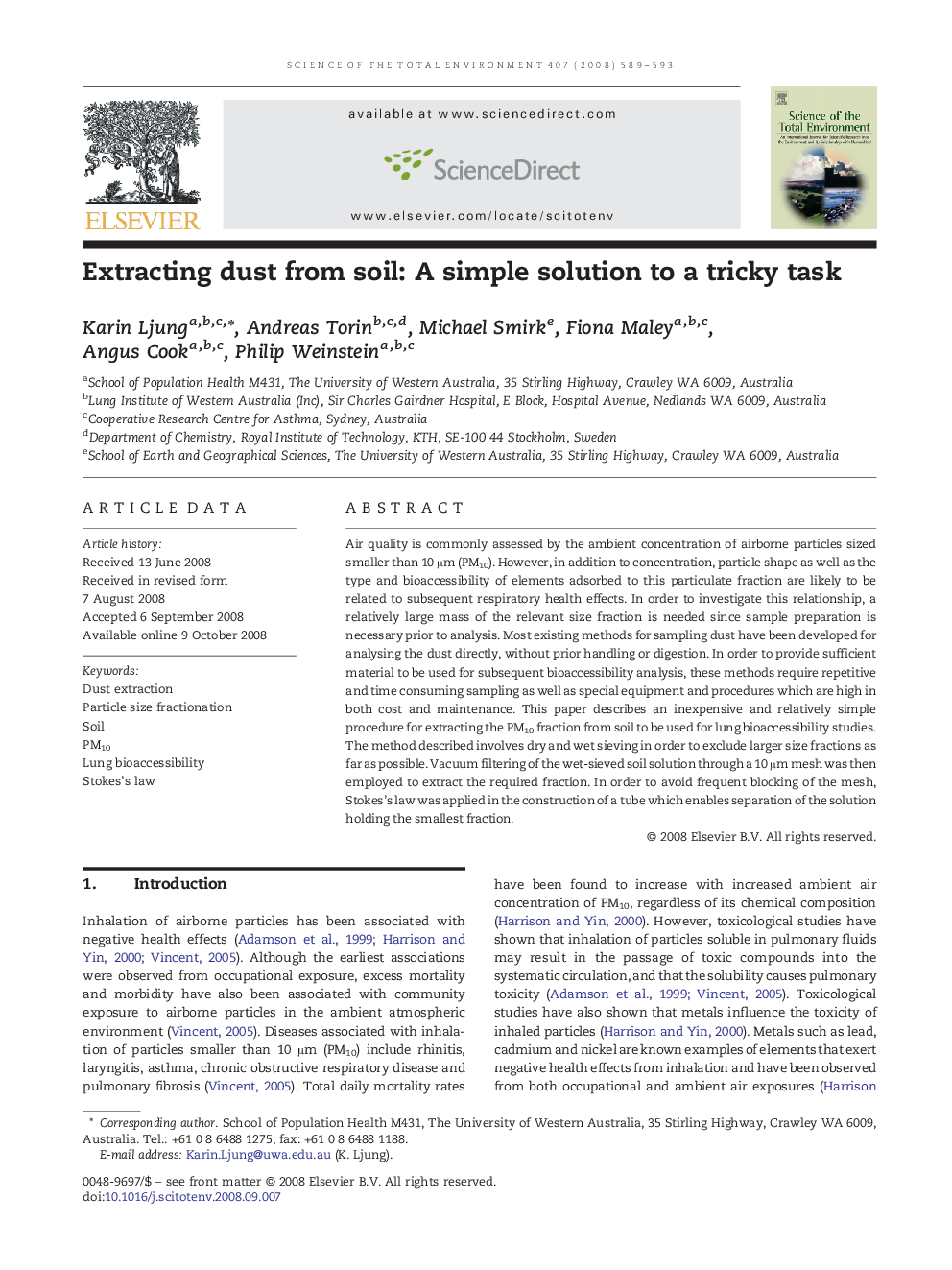| Article ID | Journal | Published Year | Pages | File Type |
|---|---|---|---|---|
| 4432512 | Science of The Total Environment | 2008 | 5 Pages |
Air quality is commonly assessed by the ambient concentration of airborne particles sized smaller than 10 µm (PM10). However, in addition to concentration, particle shape as well as the type and bioaccessibility of elements adsorbed to this particulate fraction are likely to be related to subsequent respiratory health effects. In order to investigate this relationship, a relatively large mass of the relevant size fraction is needed since sample preparation is necessary prior to analysis. Most existing methods for sampling dust have been developed for analysing the dust directly, without prior handling or digestion. In order to provide sufficient material to be used for subsequent bioaccessibility analysis, these methods require repetitive and time consuming sampling as well as special equipment and procedures which are high in both cost and maintenance. This paper describes an inexpensive and relatively simple procedure for extracting the PM10 fraction from soil to be used for lung bioaccessibility studies. The method described involves dry and wet sieving in order to exclude larger size fractions as far as possible. Vacuum filtering of the wet-sieved soil solution through a 10 μm mesh was then employed to extract the required fraction. In order to avoid frequent blocking of the mesh, Stokes's law was applied in the construction of a tube which enables separation of the solution holding the smallest fraction.
